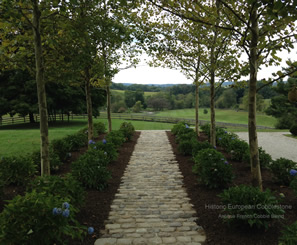Sustainability is a key part of landscape design
Since 1899, the American Society of Landscape Architects (ASLA) has been the professional association for landscape architects in the United States, representing more than 15,000 members. ASLA partners with communities, non-profit organizations, and local governments to increase public awareness about using sustainable residential design practices that yield productive plant systems and reduce the negative ecological impacts of typical residential development. In the article, Sustainable Residential Design; Applying Ecological Design, we learn that urbanization has fragmented what were once ecologically-productive landscapes in the United States. And, according to the Audubon Society, the continental U.S. has lost 150 million acres of wildlife habitat and farmland to urban sprawl over the last century!
Sustainable residential landscape architecture practices can help build a network of productive landscapes. Native plants can be used to regenerate sustainable plant communities and reconnect fragmented ecosystems in residential areas. Plants are central to a functioning global ecosystem. Whether indoor or out, plants oxygenate the atmosphere and reduce atmospheric pollutants. Critical to the success is embracing native plant communities – which are not only key to the global ecosystem, but also crucial to environmental and human health at the residential and neighborhood scales.
For more information about sustainable landscaping for your home, visit the ASLA website – THE source for landscape and design information for homeowners and professionals alike.


Recent Comments